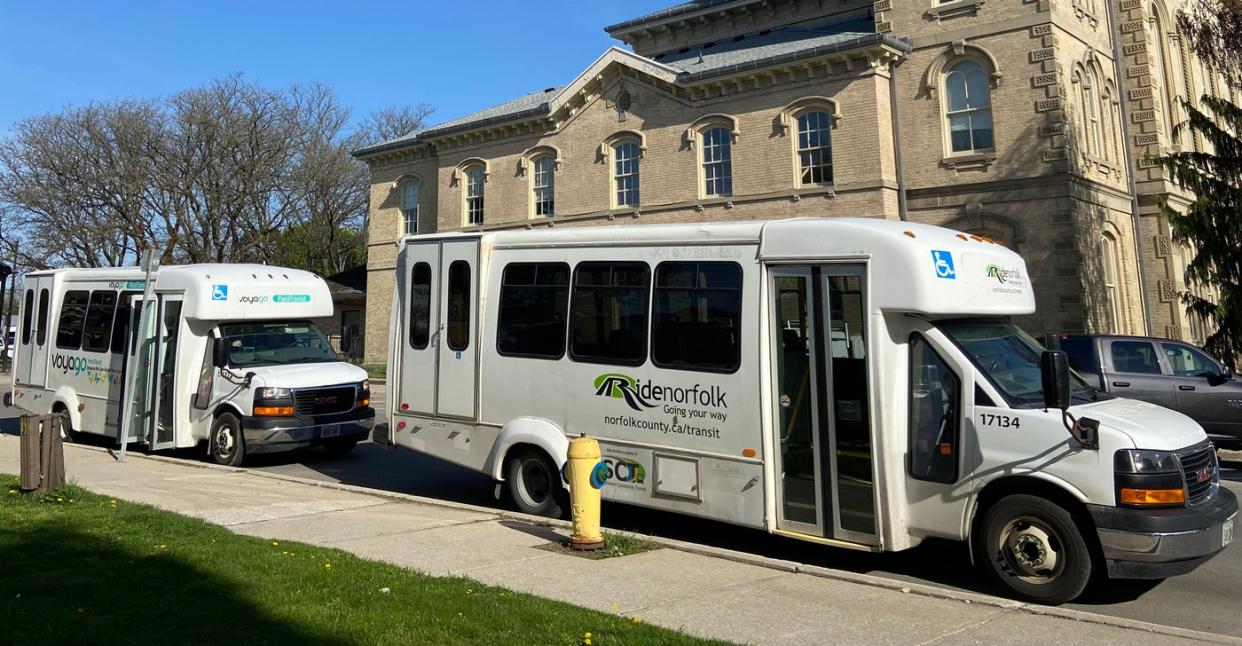Norfolk sees 45 per cent jump in public transit ridership

Ridership surged after Norfolk County’s public transit service, Ride Norfolk, switched from scheduled bus service to an on-demand model last year.
Now the agency wants help shaping the next decade of public transit in the rural county.
Residents have until July 8 to complete a survey about Norfolk’s present and future transit needs and how Ride Norfolk should evolve to meet them. The survey asks respondents to describe how they currently use Ride Norfolk or what would prompt them to consider taking the bus.
The survey — available online at engagenorfolk.ca/RideNorfolk-tmp, by calling 519-428-3178, or at all library branches, the Simcoe rec centre, and county administration buildings in Simcoe and Delhi — is part of a public engagement process that will underpin Norfolk’s transit master plan.
“We aim to understand the transportation needs of transit users and residents, identify gaps and opportunities in the current system, and help build a future network that responds to these needs,” the transit agency said in a press release.
The county created Ride Norfolk in 2011 at the urging of local social service agencies, who said the lack of public transit in the rural county — where the vast majority of travel is done by car — prevented low-income residents from getting to medical appointments, food shopping and other essential services.
Years of middling ridership prompted Ride Norfolk to launch an on-demand pilot project in July 2023 that will continue until the end of this year.
In a model similar to HSR myRide — Waterdown’s on-demand bus service — Norfolk residents can book a ride between any two stops on the system using a mobile app, through the Ride Norfolk website or over the phone.
Rides are available weekdays 7:30 a.m. to 6:00 p.m. and can be booked 45 minutes to seven days in advance.
Switching service models allowed Ride Norfolk to add 57 stops for a current total of 115, just under half of which are in Simcoe. Buses stop at the front doors of major employers, shopping centres, long-term care homes, schools and social service offices.
There are multiple stops in Port Rowan, Delhi, Waterford and Port Dover, plus 14 stops in some of Norfolk’s smaller communities.
Ride Norfolk also offers twice-daily service to the bus terminal in downtown Brantford.
Letting users choose when and where to travel saw ridership jump 45 per cent when comparing the last six months of 2023 with the same period in 2022.
Raising fares and introducing day, monthly and family passes helped drive a $17,000 year-over-year revenue bump.
Adult single rides cost $3 for an in-town trip of less than eight kilometres and $6.50 for an out-of-town trip. Seniors and youth get a discount.
John Regan, Norfolk’s director of economic development, called public transit “a crucial element for Norfolk County, contributing significantly to its economic vitality, social connectivity, and overall quality of life.”
In an email to The Spectator, Regan said public transit provides a “vital” link for employees getting to work, residents visiting friends and getting to appointments, and tourists exploring the county.
Taking the bus can be especially important for seniors, students, and low-income residents who lack access to private vehicles, and it helps the environment by getting cars off the road and reducing greenhouse gas emissions, he added.
“Investing in robust transit infrastructure is essential for the county’s long-term growth and development,” Regan said.
J.P. Antonacci, Local Journalism Initiative Reporter, The Hamilton Spectator


